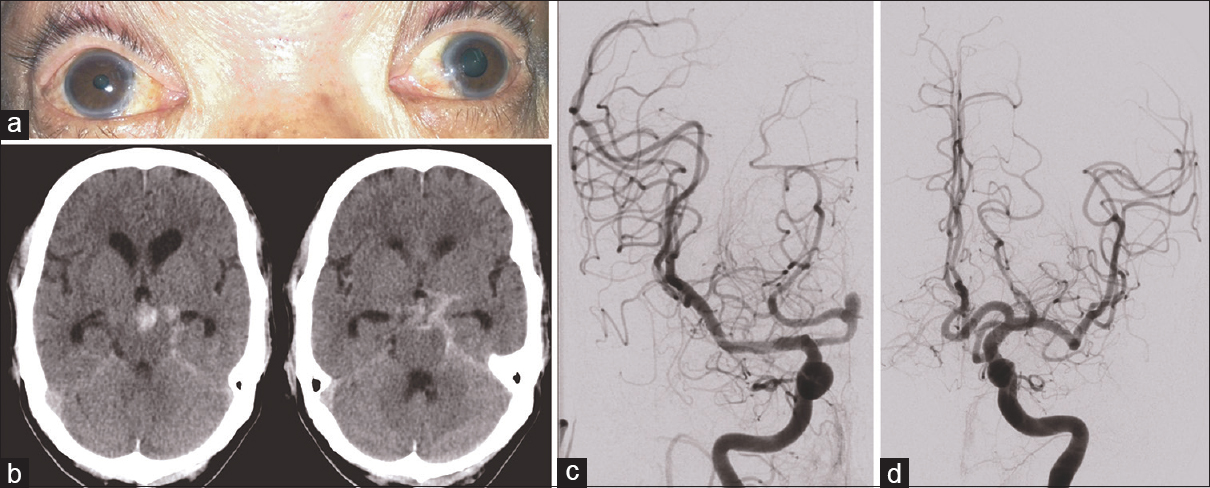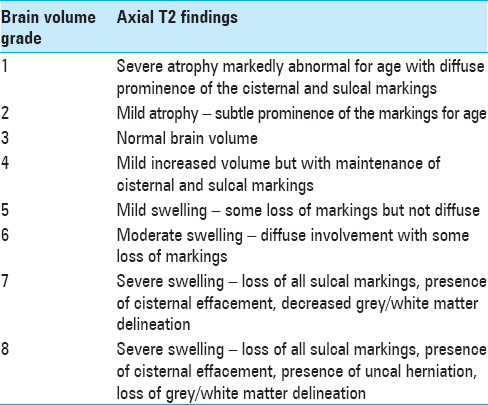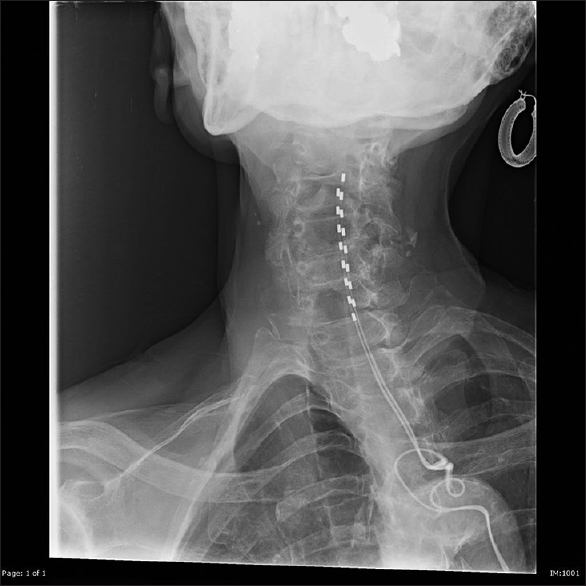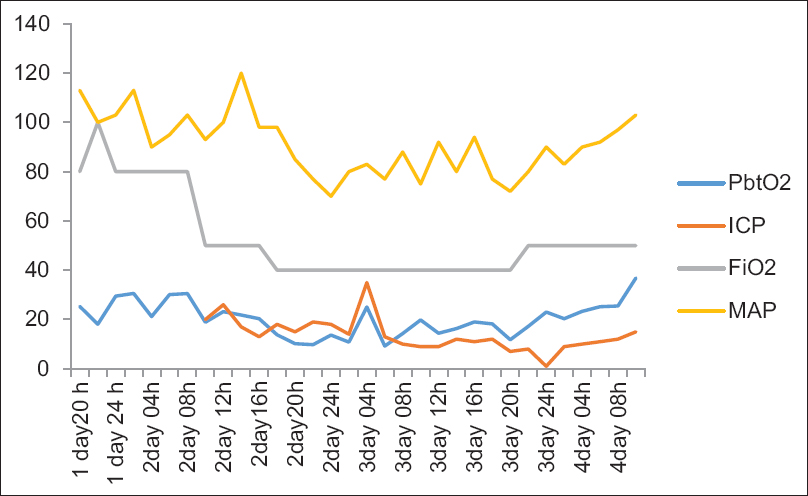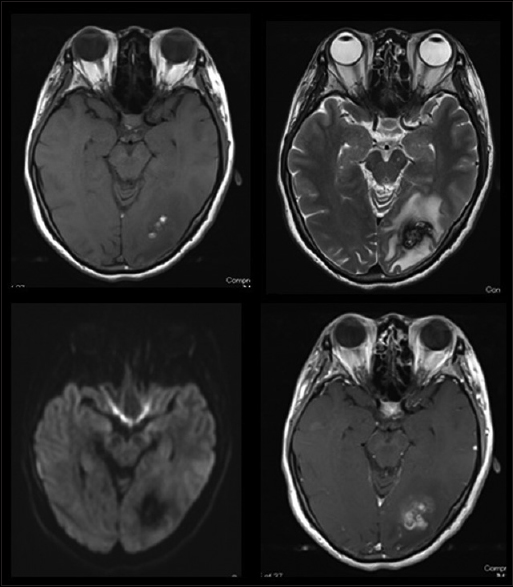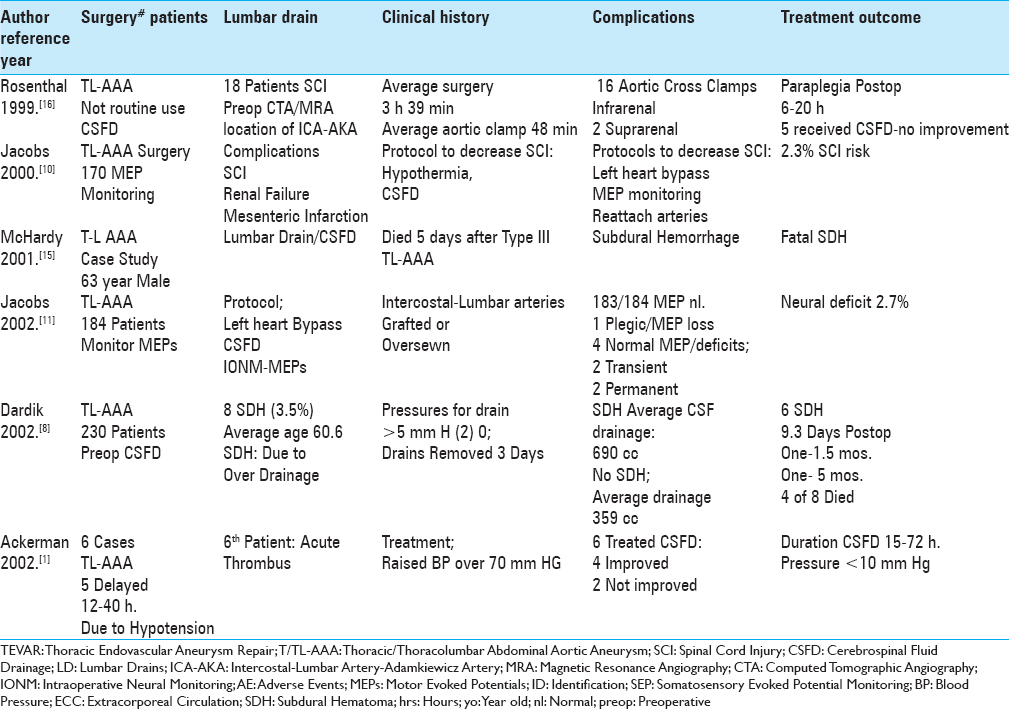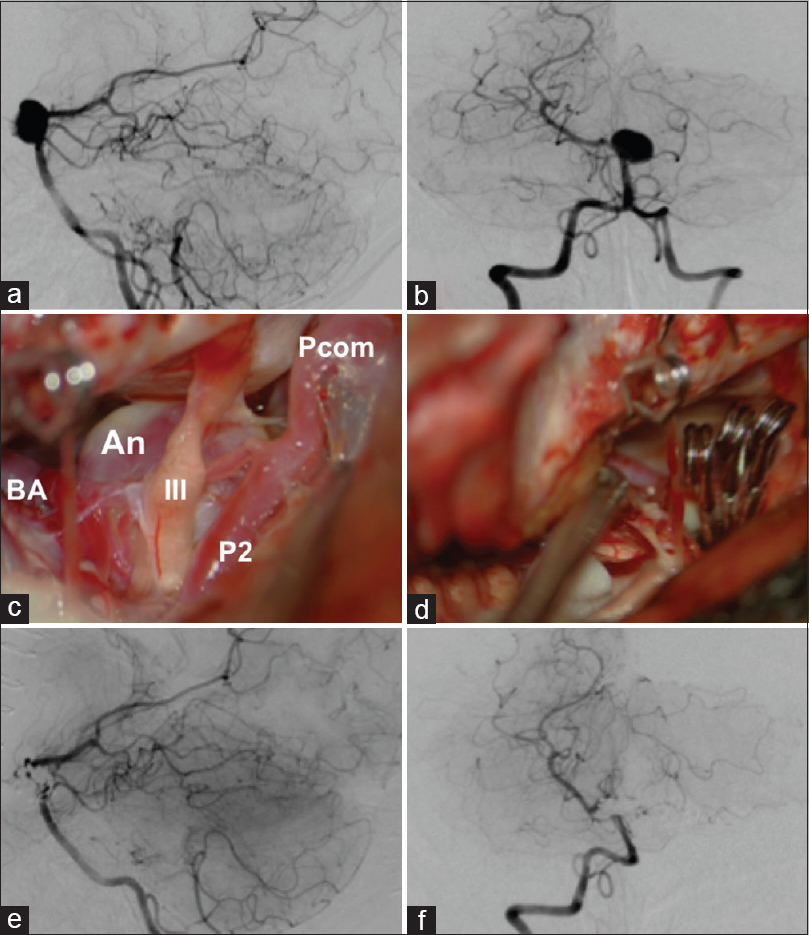Ruptured posterior cerebral artery aneurysm presenting with a contralateral cranial nerve III palsy: A case report
Date of publication: 01-Mar-2018
Background:Posterior cerebral artery aneurysms can frequently present with an ipsilateral cranial nerve III palsy.
Noninvasive measures of brain edema predict outcome in pediatric cerebral malaria
Date of publication: 01-Mar-2018
Background:Increased brain volume (BV) and subsequent herniation are strongly associated with death in pediatric cerebral malaria (PCM), a leading killer of children in developing countries. Accurate noninvasive measures of BV are needed for optimal clinical trial design. Our objectives were to examine the performance of six different magnetic resonance imaging (MRI) BV quantification measures for predicting mortality in PCM and to review the advantages and disadvantages of each method.
Treatment of glenohumeral arthritis pain utilizing spinal cord stimulation
Date of publication: 01-Mar-2018
Background:Dorsal column stimulation may be utilized to treat non-neuropathic pain attributed to glenohumeral arthritis.
PbtO2 monitoring in normobaric hyperoxia targeted therapy in acute subarachnoidal hemorrhage
Date of publication: 23-Feb-2018
Background:Low brain tissue oxygen tension (PbtO2), or brain hypoxia, is an independent predictor of poor outcome. Increasing inspirational fraction of oxygen could have a significant influence on treating lower PbtO2. Combined PbtO2 therapy, compared to the approach that focus only on regulation of cerebral perfusion pressure and intracranial pressure, shows better patient outcomes. Monitoring of PbtO2 could be helpful in individualizing treatment, preventing or limiting secondary brain injury, and maintaining better patient outcome.
A case of a mobile choroid plexus cyst presenting with different types of obstructive hydrocephalus
Date of publication: 23-Feb-2018
Background:Although it is well known that most choroid plexus cysts (CPCs) are asymptomatic, previous studies have reported that they can infrequently cause progressive hydrocephalus along with their increasing sizes. Among those cases, some patients needed cyst fenestration or cerebrospinal fluid (CSF) diversion to recover neurological deterioration. Meanwhile, some CPCs revealed spontaneous resolution, and in rare cases, they developed re-accumulation. Some reports have described series of radiological findings about their changes in location.
False-positive inflammatory change mimicking glioblastoma multiforme under 5-aminolevulinic acid-guided surgery: A case report
Date of publication: 23-Feb-2018
Background:5-aminolevulinic acid (5-ALA)–guided surgery is one of the gold standard perioperative modalities for maximum resection of malignant gliomas. However, it should be noted that 5-ALA fluorescence does not definitively indicate the presence of malignant tumor cells.
Cerebrospinal fluid drains reduce risk of spinal cord injury for thoracic/thoracoabdominal aneurysm surgery: A review
Date of publication: 23-Feb-2018
Background:The risk of spinal cord injury (SCI) due to decreased cord perfusion following thoracic/thoracoabdominal aneurysm surgery (T/TL-AAA) and thoracic endovascular aneurysm repair (TEVAR) ranges up to 20%. For decades, therefore, many vascular surgeons have utilized cerebrospinal fluid drainage (CSFD) to decrease intraspinal pressure and increase blood flow to the spinal cord, thus reducing the risk of SCI/ischemia.
Randomized clinical trials in carpal tunnel release: A double-edged sword
Date of publication: 21-Feb-2018
Acute-on-chronic subdural hematoma in a patient taking Red Clover herbal supplement: A case report
Date of publication: 21-Feb-2018
Background:Herbal supplements are commonly used, however, their side-effect profiles are poorly understood and not subject to the same scrutiny as prescribed medications. Some herbal supplements such as St Johns’ Wort are accepted to interfere with clotting pathways, however others, including Red Clover have theoretical bleeding risks based on coumarin content with very little underlying evidence.
Should we still consider clips for basilar apex aneurysms? A critical appraisal of the literature
Date of publication: 21-Feb-2018
Background:Basilar apex aneurysms constitute 5–8% of all intracranial aneurysms, and their treatment remains challenging for both microsurgical and endovascular approaches. The perceived drawback of the microsurgical approach is its invasiveness leading to increased surgical morbidity. However, many high-volume centers have shown excellent clinical results with better occlusion rates compared to endovascular treatment. With endovascular therapy taking a larger role in the management of cerebral aneurysms, the future role of microsurgery for basilar apex aneurysm treatment is unclear.


